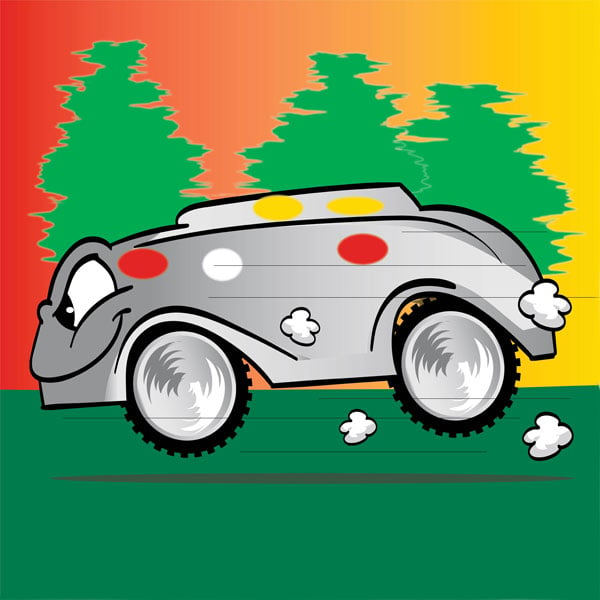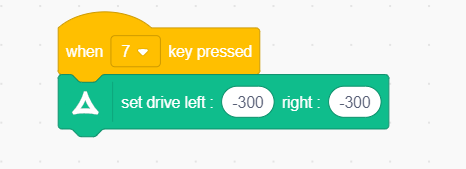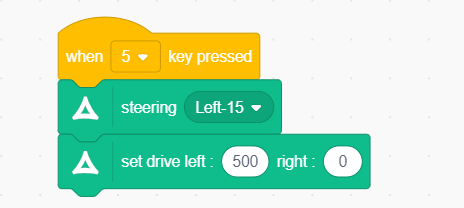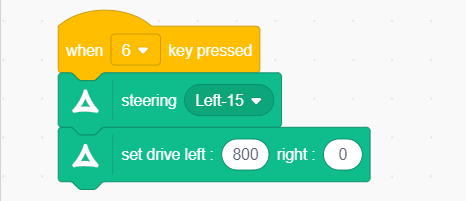Lesson Modules
Teaching Tips:
Class view answers:
1. Yes - You know that when you spin a top it will go in circles for a while, and eventually slow to a stop. You know this because you have seen it before.
2. No - You cannot predict the motion of the puppy because it does not move with any pattern, and it will move differently every time.
3. Yes - You have kicked a ball before, so you can predict that it will move in the direction it is kicked.
4. Yes - You know that a race car with always drive around the same track in the same direction (to try and win the race).
5. Yes/No - If you have not seen the dance before, you cannot predict what a person will do.
Imagine you're driving along and you see this sign in the distance. Would you slowly come to a stop or slam on the breaks?
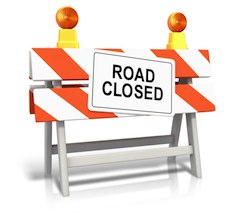
- slow
- SLAM
2. How about when a puppy runs in front of your car? Would you slowly come to a stop or slam on the breaks?
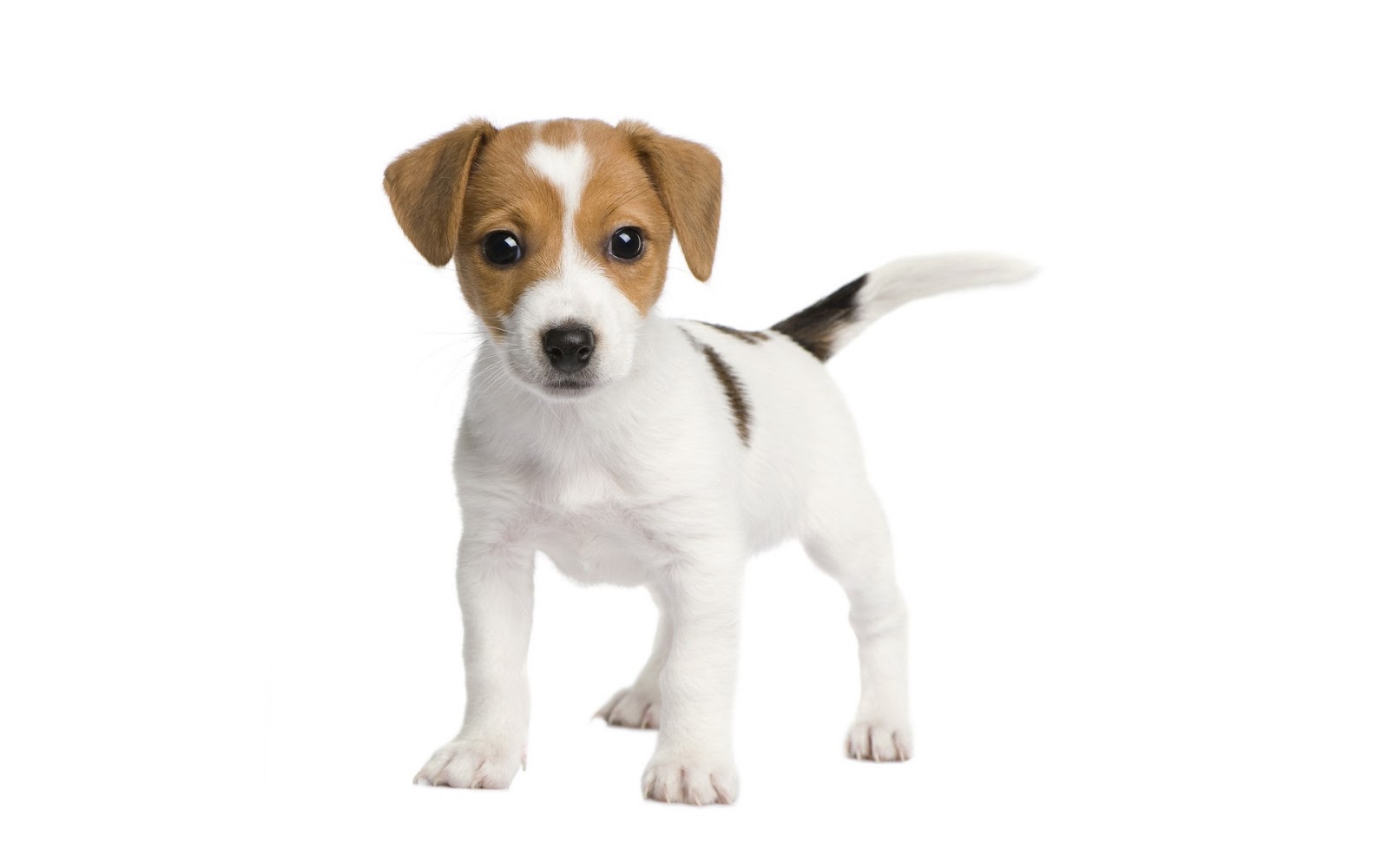
- slow
- SLAM
3. Or when you see a little old lady driving under the speed limit? Would you slow down or slam on the breaks?
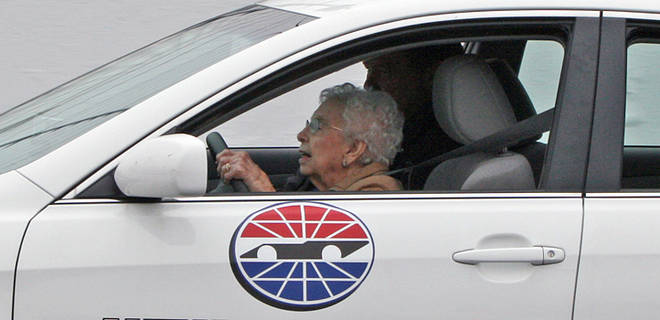
- slow
- SLAM
(Answer with one word, so you can see your answer appear in the word cloud.)
Teaching Tips:
After the experiment, it is important that students understand this:
The code from Lesson 1 worked because the car's distance sensor had time to react in response to the approaching obstacle.
When the speed is increased, the code no longer works because by the time the code is triggered to stop the car, it has already hit the obstacle.
Why do we have speed limits?
Speed limits are determined by many factors but perhaps the most important is: How many access points (opportunities to merge on/off the road) are there?
- A road with many opportunities to merge on/off will need to have a slow speed limit. One example of this is a residential road.
- A road with few opportunities to merge on/off can have a higher speed limit. One example of this is a freeway.
Other answers are encouraged, especially if they spark a debate!
Teaching Tips:
//www.robotlab.com/hubfs/Education.Robotlab.com/Autonomous%20Car/Scratch/lesson3.sb2
Here is one example of the correct answers.
Do not mark students off if their hypothesis in the BEFORE section is incorrect.
Experiment | Observation |
Question 1 | 1A Draw or describe what you think the car will do: The car will not move. 1B Why do you think the car moved the way it did? I was right, the car did not move! |
Question 2 | 2A Draw or describe what you think the car will do: 2B Why do you think the car moved the way it did? The car drove forward when I ran that code because the two wheels were turning at speed 500. |
Question 3 | 3A Draw or describe what you think the car will do: 3B Why do you think the car moved the way it did? The car drove forward slower because only one of the wheels was pushing it forward instead of two. |
Question 4 | 4A Draw or describe what you think the car will do: 4B Why do you think the car moved the way it did? The car drove forward slower because only one of the wheels was pushing it forward instead of two. |
Question 5 | 5A Draw or describe what you think the car will do: The car will drive backwards.
Why do you think the car moved the way it did? I was right, -300 means that the car will drive in the opposite direction at speed 300. |
Question 6 | 6A Draw or describe what you think the car will do: The car will drive left6B Why do you think the car moved the way it did? I was right! I think the car turned because of the Steering block. |
Question 7 | 7A Draw or describe what you think the car will do: The car will drive left faster than before.
Why do you think the car moved the way it did? I was right! I think the car turned because of the Steering block. (The car may have been faster, but it is hard to tell) |
Try this one again | 8A Draw or describe what you think the car will do: The car will drive forward at speed 500.
Why do you think the car moved the way it did? |
During the last few lessons you have been doing the job of a programmer, but this time you will do the job of a scientist. Being a scientist means creating an experiment, observing, and collecting data. In the experiment we conduct today, we will measure what happens when you change the way the car is driving.
Experiment | Observation |
| Question 1
| 1A
Draw or describe what you think the car will do:
1B
Why do you think the car moved the way it did?
|
Question 2 | 2A
Draw or describe what you think the car will do:
Why do you think the car moved the way it did?
|
Question 3 | 3A
Draw or describe what you think the car will do:
3B
Why do you think the car moved the way it did?
|
Question 4 | 4A
Draw or describe what you think the car will do:
4B
Why do you think the car moved the way it did?
|
Question 5 | 5A
Draw or describe what you think the car will do:
5B
Why do you think the car moved the way it did?
|
Question 6 | 6A
Draw or describe what you think the car will do:
6B
Why do you think the car moved the way it did?
|
Question 7 | 7A
Draw or describe what you think the car will do:
7B
Why do you think the car moved the way it did?
|
Try this one again
| 8A
Draw or describe what you think the car will do:
8B
Why do you think the car moved the way it did?
|
Teaching Tips:
Question 1: What was the most interesting thing you learned today?
Any answer will do here. If time permits, have a short discussion with students about their answers.
Question 2: Check the concepts you understand. Don’t worry, this isn’t for a grade, it’s just so your teacher can check the classes’ understanding
This is the students' self-assessment of their understanding of the material. You will see a bar graph once all the poll answers are submitted.
Question 3: What clues did you use to predict the motion of car?
The past motion of the car. Things I'd seen the car do before. What I know about the code I wrote.
- Making predictions
- Steering
